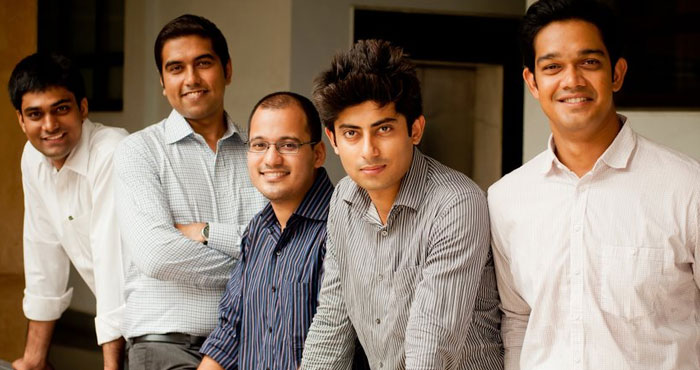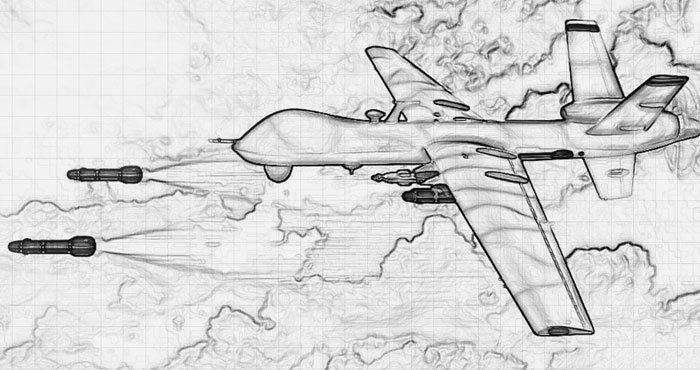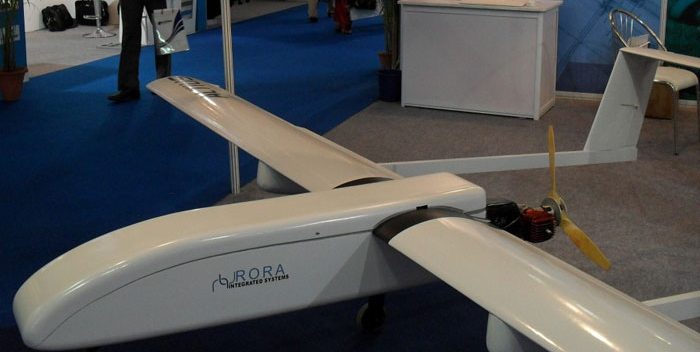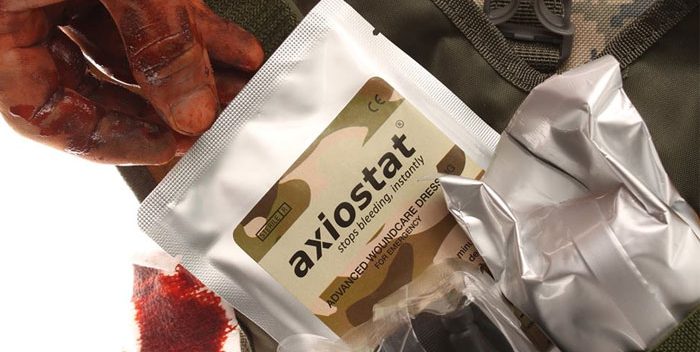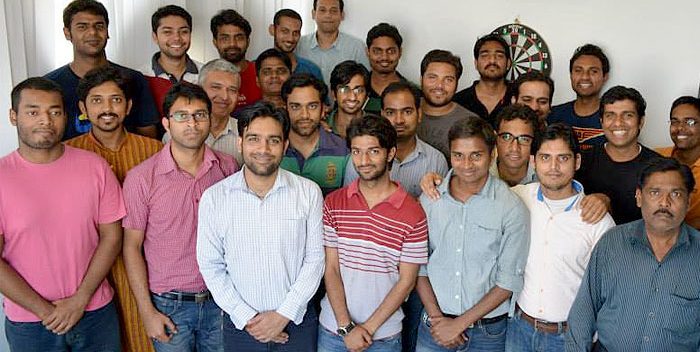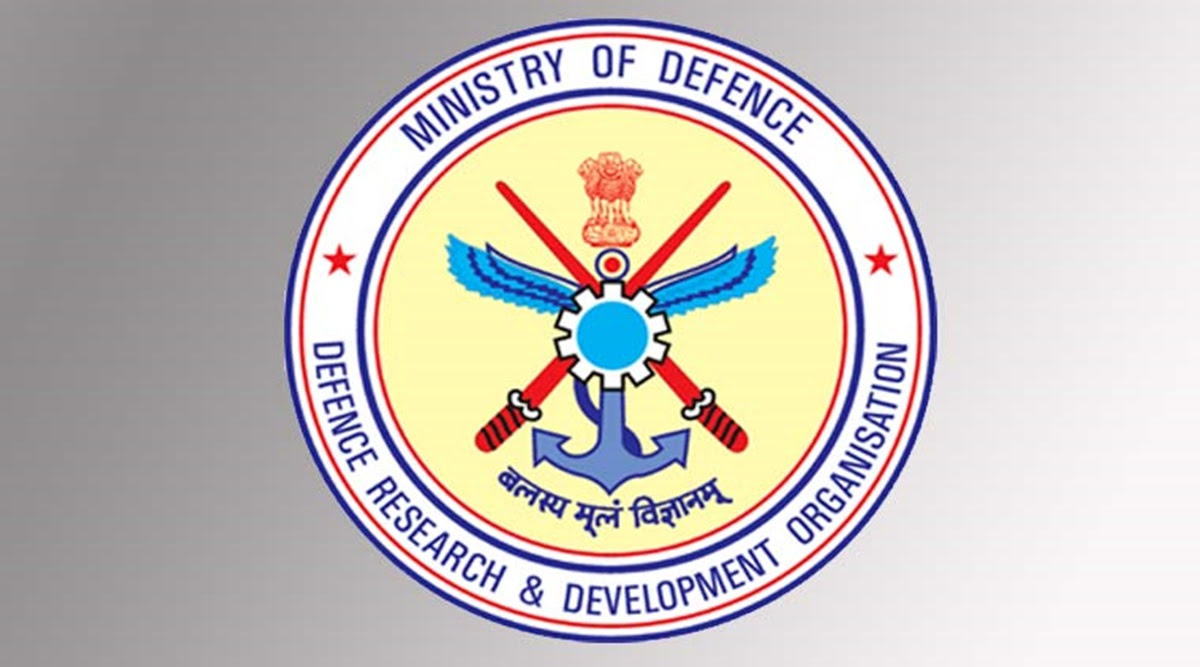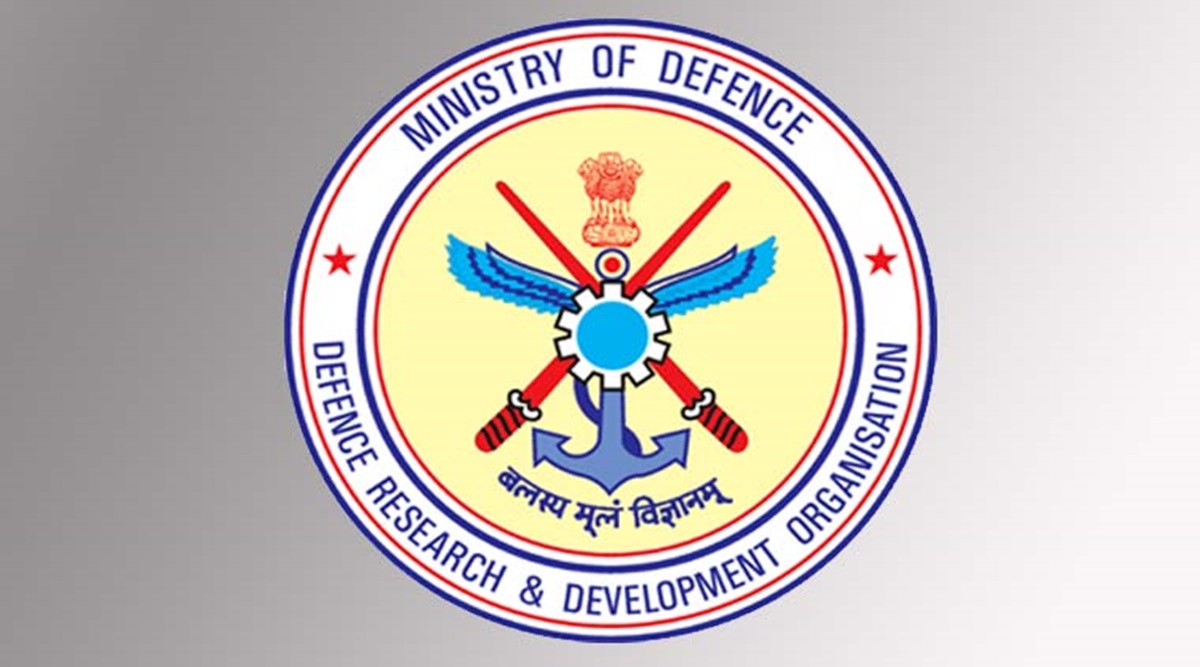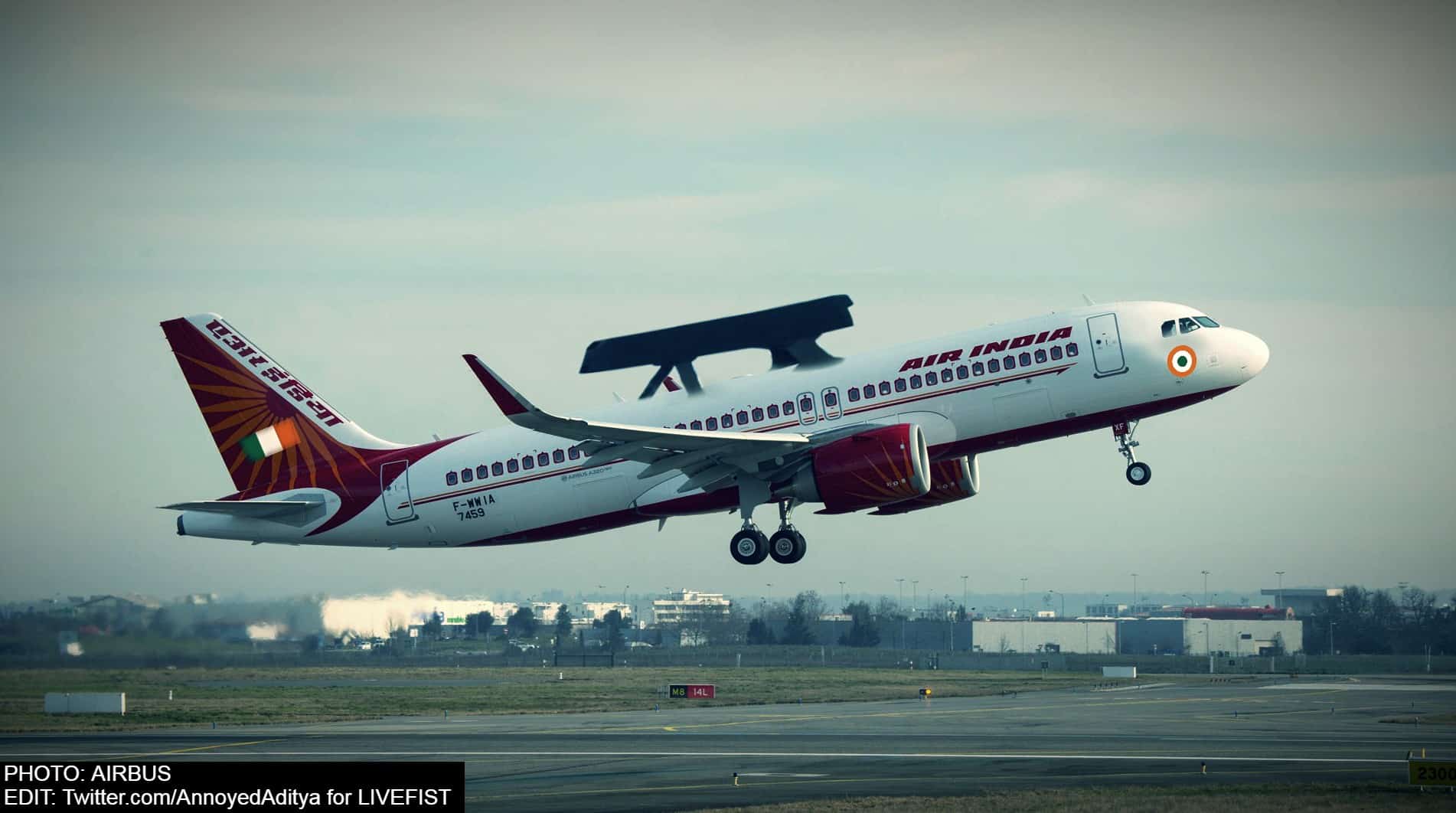MOD NOTE:
All Indian programs and developments that have to do with any Electro-magnetic spectrum detection, analysis and handling such as:
- Ground Radars
- Aerial and Space Radars
- Early Warning and Control systems (AEW, AWACS etc.)
- Communication Technology
- Command and Control Networking (C4I etc)
- How these relate to intelligence gathering (ELINT, SIGINT etc)
- Sensors (optical, infrared etc) outside the radio range
and their underlying RnD and all subsequent developments to be gathered, discussed and archived here.
=================
India's 9 Defence Tech Startups Giving Boost To Indian Armed Forces
IndianWeb2April 18, 2017
0 Comments
The Indian Startup ecosystem has been witnessing a new trend from last couple of years. Innovation which was somewhere lost in a sea of repetitiveness is now seeing a comeback in the Indian ecosystem. After making a mark in sectors like eCommerce, fintech and AI etc., the Indian Startup ecosystem is all set to take the defence sector by storm with its innovative out-of-the-box ideas.
It is important to note that till a few years ago, the Indian defence sector was an exclusive club of large-cap companies but thanks India's Startup Revolution in last one decade a lot of small startups entering in to the defence sector.
While not only is the Indian startup sector finally looking at the defence sector, the latter is also warming up to the idea of inducting latest technology and gadgets in order to be at the same level as other countries. Recently, we reported that the National Security Guard (NSG), which is an Indian special forces unit under Ministry of Home Affairs, decided to induct some of the smartest gadgets and arms being used by SWAT teams and Special Forces all over the world based on the experiences it has had in preventing terror attacks and hostage situations in closed urban spaces.
Here's a list of India's top 9 defence-based tech startups:
Bengaluru
Founders: Arvind Lakshmikumar and Ankit Kumar
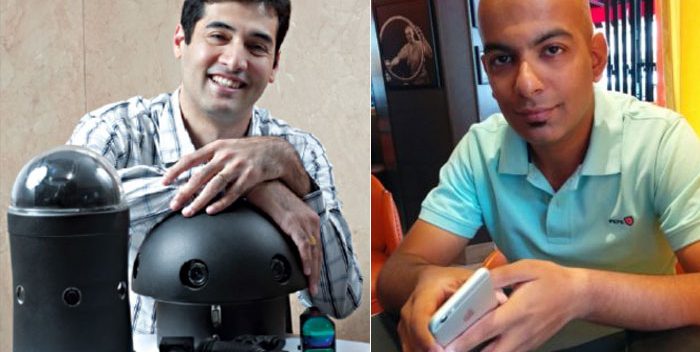
A spinout of Sarnoff Corporation and Stanford Research International, Tonbo Imaging has a rich experience on a range of battlefield modernization technologies, immersive surveillance and strategic electronics for military applications. The company principals and management have global experience being principal investigators for defense and aerospace programs.
The startup designs, builds and deploys advanced imaging and sensor systems to sense, understand and control complex environments. It offers a suite of solutions that address critical market needs in military reconnaissance, critical infrastructure security and transportation safety. The company’s offerings consist of sophisticated imaging products, custom design applications and intellectual property cores that can be licensed by OEM’s and systems integrators.
Mumbai
Founders: Ankit Mehta, Rahul Singh, Ashish Bhat
|
|
| Core Team ideaForge -- (L-R) with Ankit Mehta, Vipul Joshi, Amardeep Singh and Rahul Singh |
The Navi Mumbai-based startup is the brainchild of three IITians. It offers services only to the Defence Research and Development Organisation (DRDO) and paramilitary and security forces. Their clients include National Security Guard, Indo-Tibetan Border Police, National Disaster Response Force and Delhi Police.
NETRA, which is the flagship product of ideaForge, has been developed by the company in collaboration DRDO, Ministry of Defense, India. It is a man-portable unmanned aerial vehicle which can be launched from a small clearing by the roadside and made to fly over the area of interest up to a height of 400 meters. It is capable of sending continuous real time video of every movement on ground of people, vehicles or any movement without anybody knowing that they are being seen.
The clients of Ideaforge includes Gujarat Police, CRPF, BSF, Maharashtra Police and NDRF.
Bengaluru
Founders: Shaju Stephen, V Sunderarajan, Pradeep Kumar, Sabu Joseph, Amarnath Reddy, Varun Kurup
The word ‘AADYAH’ in Sanskrit refers to the 'original' or 'first power' from which all the five elements or senses originated. True to its name, AADYAH strives to achieve greatness in all things related to aeronautics, space and defense engineering and technology solutions.
Founded in 2016, AADYAH manufactures and develops electronic mechanical actuators, control actuation systems, and electronic optics systems for missiles and launch vehicles, and all adheres to Indian Ministry of Defence’s Defence Procurement Policy 2016 (DPP). The startup also runs a centre for excellence in design, engineering, integration and testing to develop mission-critical aerospace and defense systems.
Bengaluru
Founders: Dr. Jacob Crasta
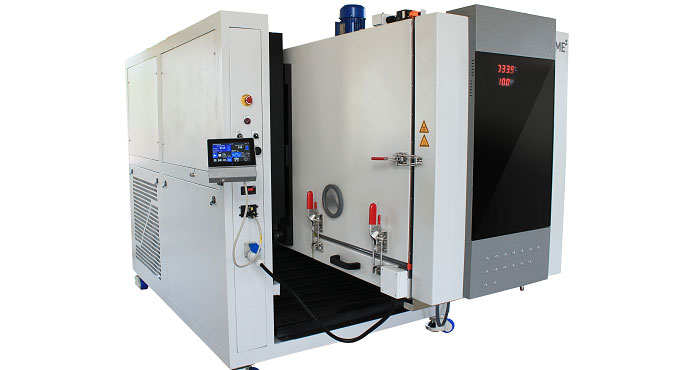
|
| PAC series of environmental chambers, customised to integrate an electro dynamic shaker. Combined environmental and vibration tests can be conducted as per various international and military standards |
The company claims to be fastest growing Environmental Test Chamber manufacturers in the world. Over the years, CM Envirosystems has gained a reputation of being among the most reliable global manufacturers of Environmental Test Chambers by providing testing solutions to Aerospace, Automobile, Electrical, Electronics and Defense industries.
The company has already created customized test chambers to test equipments of various famous projects like AGNI. It is also into providing chambers that help the defense forces in testing various weapons in extreme conditions of Siachen and Thar.
New Delhi
Founders: Tommy Katzenellenbogen, Tushar Chhabra, Saurav Agarwala
Founded with a vision of pushing the borders with IoT, CRON Systems is a disruptive startup within the multi-billion Dollar border defence space that is developing state-of-the-art Intrusion detection systems. These systems developed by the startup implement the latest IoT technologies and designs at a fraction of the costs of other leading products in that space.
The deep-tech company is focused on deploying cutting edge solutions for border security. The company has already bagged orders from the Border Security Force and the Indian Army to install its products to secure the international borders as well as perimeter of sensitive installations like army camps, airports etc. Some of its solutions have also been adapted for commercial markets.
Earlier this year, the startup was in the
news for raising funding from India’s premier early stage investor, YourNest.
Bengaluru
Founders: Seven Graduates from IIT Kanpur
Supported and funded by the TATA group, the startup is into developing indigenous technology, manufacturing and integrating state-of-the-art airborne systems with a focus on small Unmanned Aerial Systems (UAS).
By tailoring its systems to meet requirements ranging from wartime operations to counter-terrorism and anti-insurgency operations, the startup aims to continue serving the needs of the Armed forces and Peace Keeping forces. The startup constantly innovates in order to get a better understanding of the requirements of safe-guarding borders and securing homeland.
It is the first company in the country that is developing UAV technology without any foreign assistance whatsoever. This particular factor is not only a factor of pride for the startup but it allows the company to pass on the economic benefits to its consumers.
Bengaluru
Founders: Leo Mavely, Ashish Pandya
|
|
| Battlefield proven Military Variant of Axiostat Chitosan haemostatic dressing currently used by Army, Paramilitary of India and abroad |
A Medtech company focused on Advanced Wound Care products, the startup is the producer of the first haemostatic emergency dressing in India called Axiostat. The life-saving innovation is now being used by emergency service providers such as ambulances, by defense personnel such as the Indian military, and by numerous trauma and casualty care centres in hospitals.
Noida
Founders: Amitav Chaudhuri, Girish Mudgal and Sudhakar Medepalli
TimeTooth Technologies is an engineering solutions company conceived with an aim of developing new products that stretch the envelope of functional performance. The firm is currently into making landing gears India's own Unmanned Aerial Vehicle (UAV) or Drone called Rustom II.
The 30-member company has been completely involved in designing, development and manufacture of the landing gear. The drone will be used by India's defence forces for long range and high altitude surveillance.
New Delhi
Founders: Praveen Bhaniramka
A technology startup in the visual computing field, VizExperts is into developing complex turnkey solutions that simplify data to decision transformation at various organizations.
In 2014, the startup's digital sand model technology was inducted by the Army for real-time operation planning, enabling faster and critical decision making. Digital Sand Model is basically a revolutionary solution for operation planning, mission briefing and training, for the Indian paramilitary, police, and the armed forces.
Another VizExperts' service being used by the Indian army is GEORBIS. It is a 3D geospatial platform that helps the army in real- time operation planning, and enable faster and critical decision making. The platform is equipped with various interaction devices, software and terrain data to plan the operation in real-time.












